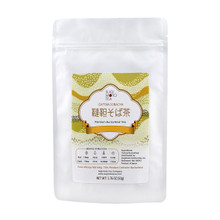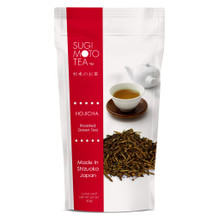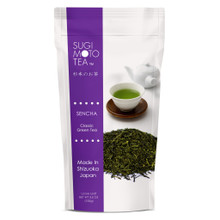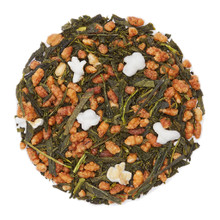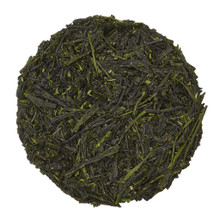Why You Should Use A Kyusu
The Kyusu, a cornerstone of Japanese tea culture, is more than just a vessel—it embodies centuries of tea craftsmanship and tradition. But its significance isn't purely historical. Modern-day tea enthusiasts and scientists alike have identified the Kyusu as a preferred brewing vessel. With its unique design nuances, it ensures optimal flavor extraction, making it ideal for high-quality teas. Here's an in-depth exploration of the Kyusu's multifaceted appeal.
Origins and Historical Context of the Kyusu
The Kyusu teapot traces its roots back to ancient Japan, where tea was not just a beverage but an integral part of the country's cultural tapestry. Over the years, as tea ceremonies (or "Chanoyu") evolved, so did the Kyusu, adapting to the needs of different tea leaves and brewing preferences. What was born as a vessel for heating sake and water later became the chosen brewing vessel for loose leaf tea as sencha became the more common tea in Japan.
Detailed Anatomy of the Kyusu
A well-made Kyusu has a harmonious blend of its main body (comprising the torso, mouth, and hand) and its lid. The seamless connection, or "suriawase," between the body and lid ensures no gaps, enhancing its aesthetic appeal and functionality. The presence of an internal strainer sets it apart from brewing vessels commonly used elsewhere. With this foundation in place, there are various Kyusu designs tailored to different cultural influences and brewing needs.
Yokode Kyusu
Originating in China but becoming distinctly Japanese, the Yokode Kyusu is distinguished by its side-handle design. An excellent example of this is our Black Pine Kyusu. This iconic positioning isn't just for aesthetics; it serves a practical purpose. The side-handle allows the tea drinker to pour tea smoothly, with a grip that distributes weight evenly, minimizing hand strain. Additionally, the spout is carefully crafted to ensure a consistent flow of tea, reducing the chance of tea leaves escaping and ensuring an unobstructed pour. Lastly, a fine mesh strainer maintains a consistent pour while keeping the leaves out of your cup.
Ushirode Kyusu
Drawing influence from both Chinese and Western teapots, the Ushirode Kyusu features its handle at the back. This design, while providing a more familiar grip to those accustomed to Western teapots, has been made distinctly Japanese in several kiln styles. While offering a balance of East and West, merging the two worlds in both function and form, this style is exceedingly rare in Japan.
Uwade Kyusu
The Uwade Kyusu, with its handle on top, differs from the others in having a non-earthenware part: a handle typically of bamboo or wood. This design, also commonly called a Dobin, lends itself to larger tea pot sizes better suited for preparing tea for entire families. With its wooden or bamboo handle, it also is preferred for the few teas that are often prepared with boiling-temperature water, such as hojicha, genmaicha, and bancha.
Houhin
Designed specifically for brewing high-quality, delicate teas like gyokuro, the Houhin stands out for having no handle. A notable example of this design is our Shiboridashi, a term which refers to a houhin with no strainer. The wide opening serves dual purposes: it offers ample space for a large amount of tea leaves to be evenly extracted with a small amount of water and aids in easy removal of spent leaves. The absence of a handle reflects that the Houhin is typically used for teas brewed at much lower temperatures, thus eliminating the potential for burning ones hands while pouring.
The Science Behind Kyusu Brewing
Renowned Kyusu-producing regions, such as Tokoname, are celebrated for their iron-rich clay, a pivotal element in the tea brewing process. This specific clay composition has a unique reaction with catchins in tea, reducing bitterness, thus accentuating the tea's umami notes. Beyond the clay's composition, its insulative properties play a crucial role in maintaining a consistent temperature during brewing. This becomes especially critical when preparing delicate teas like gyokuro, which demand precise temperature control. Additionally, the Kyusu's design, particularly in the Yokode Kyusu, showcases a meticulous balance between form and function. The angle between its spout and handle, often less than 90 degrees, isn't merely an aesthetic choice. It facilitates ease of pouring and allows for larger tea pot sizes than traditionally used in China.
How to Care for Kyusu
A Kyusu teapot is not merely a vessel for brewing tea; it is an investment in your tea-drinking experience. With proper care, a Kyusu can last generations, accompanying you through countless moments of tranquility. Here's a deeper dive into the best practices to ensure your Kyusu's longevity.
Kyusu's unique clay composition has the ability to absorb and retain flavors over time, which can enrich subsequent brews. To preserve this feature, it's recommended to clean your Kyusu using only water and a soft brush. Chemical detergents can not only compromise the clay's natural properties but also introduce foreign flavors, diminishing your tea's purity and taste.
Cleaning
Kyusu's unique clay composition has the ability to absorb and retain flavors over time, which can enrich subsequent brews. To preserve this feature, it's recommended to clean your Kyusu using only water and a soft brush. Chemical detergents can not only compromise the clay's natural properties but also introduce foreign flavors, diminishing your tea's purity and taste.
Avoid Harsh Methods
A Kyusu is a product of delicate craftsmanship and should be treated with the utmost care. Using detergents can strip the clay of its natural oils and minerals, affecting its flavor-retention quality. Furthermore, exposing a Kyusu to the extreme temperatures of dishwashers or microwaves can cause cracks or weaken the structure, leading to potential breakages in the future.
Aftercare
Beyond mere aesthetics, ensuring your Kyusu is dried thoroughly after each use is vital for its health. Lingering moisture can encourage mold growth. By placing the teapot upside down in a well-ventilated area, you can ensure all residual moisture evaporates.
The Kyusu stands at the intersection of tradition, art, and science, offering a brewing experience that's both enriching and enlightening. Whether you're a tea novice or a seasoned connoisseur, the Kyusu ensures a distinguished tea experience with every steep. Embracing the Kyusu is not just about brewing tea; it's about honoring a timeless legacy.
Reference: https://sencha-note.com/root-of-kyusu/

















